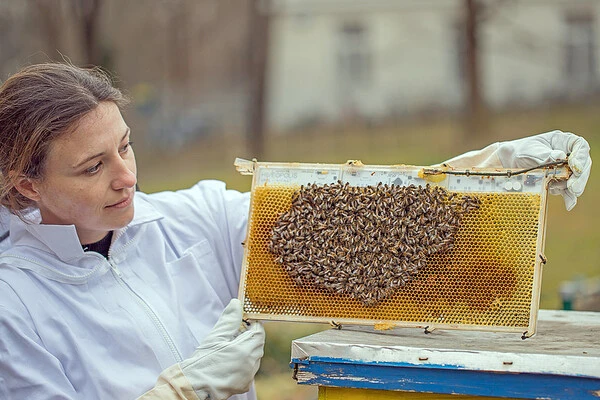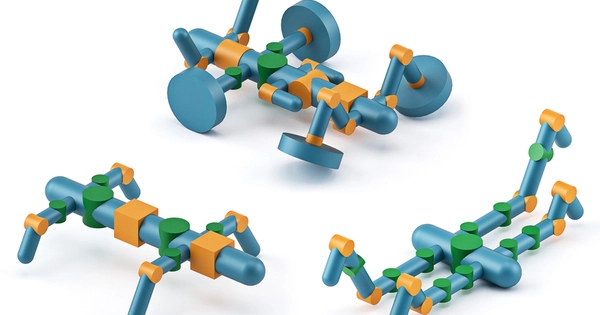Collective bee behavior is a fascinating subject of study, and robotic systems can provide a unique window into this complex phenomenon. By creating robotic models of bees and studying how they interact with each other and their environment, researchers can gain new insights into how bee colonies function as a collective organism.
Researchers have created a temperature-modulating robotic system that can be seamlessly integrated into notoriously sensitive honeybee hives, providing a previously unseen view of honeybee behavior as well as a means to influence it.
When it comes to being studied, honeybees are notoriously picky. A colony’s behavior can be disrupted by research instruments, environmental conditions, and even unfamiliar odors. A joint research team from EPFL’s School of Engineering and School of Computer and Communication Sciences, as well as the Hiveopolis project at Austria’s University of Graz, has developed a robotic system that can be built unobtrusively into the frame of a standard honeybee hive.
Composed of an array of thermal sensors and actuators, the system measures and modulates honeybee behavior through localized temperature variations.
We were able to encourage the bees to move around in ways they would never normally do in nature during the winter, when they tend to huddle together to conserve energy, by gathering data on their position and creating warmer areas in the hive.
Rafael Barmak
“Many rules of bee society — from collective and individual interactions to raising a healthy brood — are regulated by temperature, so we leveraged that for this study,” explains EPFL PhD student Rafael Barmak, first author on a paper on the system recently published in Science Robotics. “The thermal sensors capture a snapshot of the bees’ collective behavior, while the actuators allow us to influence their movement by modulating thermal fields.”
“Previous studies on the thermal behavior of honeybees in winter have relied on observing the bees or manipulating the outside temperature,” says Martin Stefanec of the University of Graz. “Our robotic system enables us to change the temperature from within the cluster, emulating the heating behavior of core bees there, and allowing us to study how the winter cluster actively regulates its temperature.”
A ‘biohybrid superorganism’ to mitigate colony collapse
Bee colonies are difficult to study in the winter because they are sensitive to cold and opening their hives risks harming them as well as influencing their behavior. However, thanks to the researchers’ biocompatible robotic system, they were able to study three experimental hives at the University of Graz’s Artificial Life Lab during the winter and control them remotely from EPFL. A central processor inside the device coordinated the sensors, sent commands to the actuators, and transmitted data to the scientists, demonstrating that the system could be used to study bees without the need for intrusion – or even cameras.

Francesco Mondada, head of the Mobile Robotic Systems Group, explains that one of the most important aspects of the system, which he refers to as a “biohybrid superorganism” due to its combination of robotics and a colony of individuals acting as a living entity, is its ability to simultaneously observe and influence bee behavior.
“We were able to encourage the bees to move around in ways they would never normally do in nature during the winter, when they tend to huddle together to conserve energy, by gathering data on their position and creating warmer areas in the hive. This allows us to act on a colony’s behalf, such as directing it toward a food source or discouraging it from dividing into too-small groups, which can endanger its survival.”
The scientists were able to prolong the survival of a colony following the death of its queen by distributing heat energy via the actuators. The system’s ability to mitigate colony collapse could have implications for bee survivability, which has become a growing environmental and food security concern as the pollinators’ global populations have declined.
Never-before-seen behaviors
In addition to its potential to support colonies, the system has shed light on honeybee behaviors that have never been observed, opening new avenues in biological research.
“The local thermal stimuli produced by our system revealed previously unreported dynamics that are generating exciting new questions and hypotheses,” says EPFL postdoctoral researcher and corresponding author Rob Mills. “For example, currently, no model can explain why we were able to encourage the bees to cross some cold temperature ‘valleys’ within the hive.”
The researchers intend to use the system to study bees during the summer, when they are most active in raising young. In the meantime, the Mobile Robotic Systems Group is investigating systems that interact with honeybees via vibrational pathways.
“The biological acceptance aspect of this work is critical: because the bees accepted the integration of electronics into the hive, our device has a lot of potential for different scientific or agricultural applications,” says Mondada.





